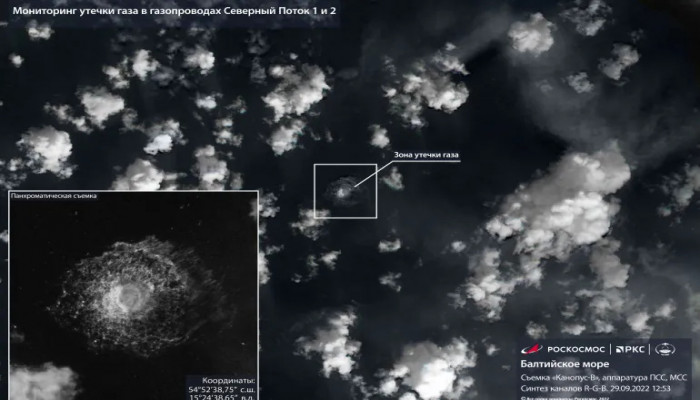NATO launched a new center Friday for protecting undersea pipelines and cables following the still-unsolved apparent attack on the Nord Stream pipelines and amid concern Russia is mapping vital Western infrastructure for energy and the internet in waters around Europe.
NATO launches new centre to protect undersea pipelines amid Russian sabotage threat
- In Reports
- 03:45 PM, Jun 17, 2023
- Myind Staff
Following the alleged attack on the Nord Stream gas pipelines and as worries grow that Russia has mapped crucial Western underwater infrastructure throughout Europe, NATO has built a new centre devoted to protecting undersea pipelines and data cables.
- According to NATO Secretary General Jens Stoltenberg, proposals for a NATO "maritime centre for the security of critical underwater infrastructure" were accepted by the military ministers of NATO states during a conference in Brussels.
“The threat is developing,” Lt. Gen. Hans-Werner Wiermann, who heads a special cell focused on the challenge, said after NATO defense ministers gave the green light for the new center, located in Northwood, northwest London.
“Russian ships have actively mapped our critical undersea infrastructure. There are heightened concerns that Russia may target undersea cables and other critical infrastructure in an effort to disrupt Western life,” he told reporters at NATO headquarters in Brussels.
The centre, which will have its headquarters at NATO's naval facility in Northwood, a suburb of London, will be in charge of developing a new surveillance system to keep an eye on certain sections of the Atlantic as well as those in the North Sea, the Baltic Sea, the Mediterranean Sea, and the Black Sea.
Investigations are ongoing into the alleged attacks on the Nord Stream 1 and Nord Stream 2 pipelines, which were constructed to transport Russian natural gas to Germany.
- Although no one has been formally blamed, NATO has since increased its presence in the Baltic and North Seas with dozens of ships, assisted by maritime patrol aircraft and subaerial technology like drones.
About 8,000km (5,000 miles) of oil and gas pipelines crisscross the North Sea alone, and other underwater data systems, networks and grids are impossible to monitor constantly.
- “There’s no way that we can have NATO presence along also these thousands of kilometers of undersea infrastructure,” Stoltenberg told reporters after chairing the meeting.
“But we can be better at collecting … intelligence, sharing information, connecting the dots, because, also in the private sector, there is a lot of information” about ship movements and maritime surveillance, he said.
The new center and NATO allies will concentrate on high-risk sites, such as pipelines in shallow waters that are easily accessible by divers, rather than attempting to monitor everything. Potential damage to data cables can be mitigated more easily by simply dropping in more cables.
Image source: Reuters
NATO focuses on underwater assets amid Russia sabotage concerns
NATO says Russian ships mapped critical underwater infrastructure in sea areas of the Western military alliance.




No comments:
Post a Comment